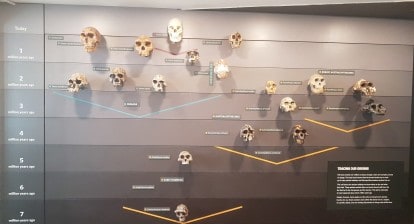Around 50 years ago, in Cave Tunel Wielki (Małopolska) in Poland, some flint tools were discovered. These tools are “half a million years old and among the oldest man-made objects in today’s Poland” according to a new study.
Scientists from the University of Warsaw, led by Dr. Małgorzata Kot from the Faculty of Archaeology, have been working on a project “aimed at analysing artefacts and bones discovered by archaeologists several decades ago during excavations in the Krakow-Częstochowa Upland caves. One of them is Cave Tunel Wielki near Ojców”.
Most of the finds from the caves had been boxed up but recent thorough analysis is shedding new light on the various artefacts found in Cave Tunel Wielki. Initially, scientists had been of the opinion that the oldest remains in the Cave were not older than 40,000 years old.
As per Dr Kot: “It all started with a remark of an expert working on the remains of small mammals, Dr. Claudio Berto. He said that the species he analysed were certainly older than 40,000 years and could be up to half a million years old.”
When the bones were analysed, teeth of small rodents as well as remains of large animals were found, including such animals as the Mosbach wolf (Canis mosbachensis), a lycaon (Lycaon lycoonides), an ancestor of the cave bear and two feline species – the cave lion and jaguar. They all lived in the area comprising modern day Poland 450-550,000 years ago.
And the exciting bit is that the same layer of earth contains around 40 flint artefacts. These are mainly waste generated during the production of tools, but there are also several final products, including small flint knives.
Dr. Kot said: “Since these items come from the same layer as the bones, it means that their age is very similar. This assumption was confirmed by excavations carried out in the cave in 2018. They confirmed the arrangement of layers described by researchers half a century ago. We also discovered more production waste and animal bones.”
However, the animal bones do not bear any signs of cutting or processing so the animals were not hunted by the tool makers. Analysis has revealed that the tools were made by an ancestor Neanderthals, the Homo heidelbergensis. They are an extinct species or subspecies of archaic human alive during the Middle Pleistocene (between 770,000 years ago and 126,000 years ago).
Dr. Kot said: “Until now, we knew only two places in present-day Poland, where equally old flint artefacts were discovered – in Trzebnica and Rusko in Lower Silesia. There are no older traces of the presence of man in our lands.”
Dr. Not said: “We were surprised that half a million years ago people in this area stayed in caves, because those were not the best places to camp. Moisture and low temperature would discourage that. On the other hand, a cave is a natural shelter. It is a closed space that gives a sense of security. We found traces that may indicate that the people who stayed there used fire, which probably helped tame these dark and moist places.”
Because climate conditions were similar to what they are today in Poland this provides a great opportunity to learn how humans survived in the harsh weather. “This is an extremely interesting aspect of analyses for us. We can examine the limits of the possibilities of survival of Homo heidelbergensis, and thus observe how he adapted to these adverse conditions”, she continued.
Researchers now hope to find Homo heidelbergensis bones in Cave Tunel Wielki, which would mean that they would be the oldest human bones ever found in Poland. At the moment the oldest ones belong to a 50,000 years old Neanderthal.
Not continued: “We selected several potential bones, but DNA analyses carried out at the Max Planck Institut in Leipzig, at the Nobel Prize winner Professor Svante Paabos’ laboratory showed that genetic material had not survived in the bones.”







